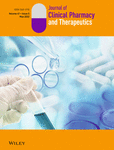Correlation between CA12 and TFF3 and their prediction value of neoadjuvant chemotherapy response in breast cancer
Funding information
The authors did not receive support from any organization for the submitted work.
Abstract
What is known and Objective
Compared with other molecular subtypes, hormone receptor-positive breast cancer often shows worse neoadjuvant chemotherapy efficacy. This study aims to explore the relationship between the oestrogen receptor (ER)-related genes carbonic anhydrase 12 (CA12) and trefoil factor 3 (TFF3) and their predictive value of neoadjuvant chemotherapy for breast cancer.
Methods
We investigated the relationships between CA12, TFF3 and ER status and their predictive value of anthracycline-taxane neoadjuvant chemotherapy in 115 female breast cancer patients via real-time polymerase chain reaction (RT-PCR) and 4 GEO datasets: GSE41998, GSE25065, GSE20194 and GSE20271. Then, the effects of CA12 and TFF3 on the chemotherapy drugs doxorubicin and docetaxel were verified in vitro in the breast cancer cell lines MCF-7 and BT474.
Results and Discussion
The GEO datasets and RT-PCR results showed that the relative expression of both CA12 and TFF3 was higher in oestrogen receptor-positive samples compared with the other samples (p < 0.05). CA12 was significantly correlated with TFF3 (p < 0.05). In MCF-7 cells, inhibition of TFF3 induced downregulation of CA12 and ESR1 (p < 0.05) at both the mRNA and the protein levels, while inhibition of CA12 also downregulated TFF3 and ESR1 (p < 0.05). In BT474 cells, inhibition of TFF3 downregulated CA12 and ESR1 (p < 0.05) at both the mRNA and the protein levels, while inhibition of CA12 led to slight upregulation of TFF3 and ESR1 (p > 0.05). Moreover, GEO datasets and RT-PCR results showed that CA12 and TFF3 were more highly expressed in nonpathological complete response (non-pCR) samples than in pCR samples (p < 0.05). Cell viability assays of MCF-7 and BT474 cells showed that inhibiting CA12 and TFF3 could enhance sensitivity to doxorubicin and docetaxel (p < 0.05).
What is new and Conclusion
CA12 and TFF3 were correlated with each other, and their high expression might explain the worse efficacy of neoadjuvant chemotherapy in oestrogen receptor-positive breast cancer patients.
CONFLICTS OF INTEREST
No conflicts of interest have been declared.
Open Research
DATA AVAILABILITY STATEMENT
The datasets analysed during the current study are available in the GEO database (https://www.ncbi.nlm.nih.gov/geo/).




